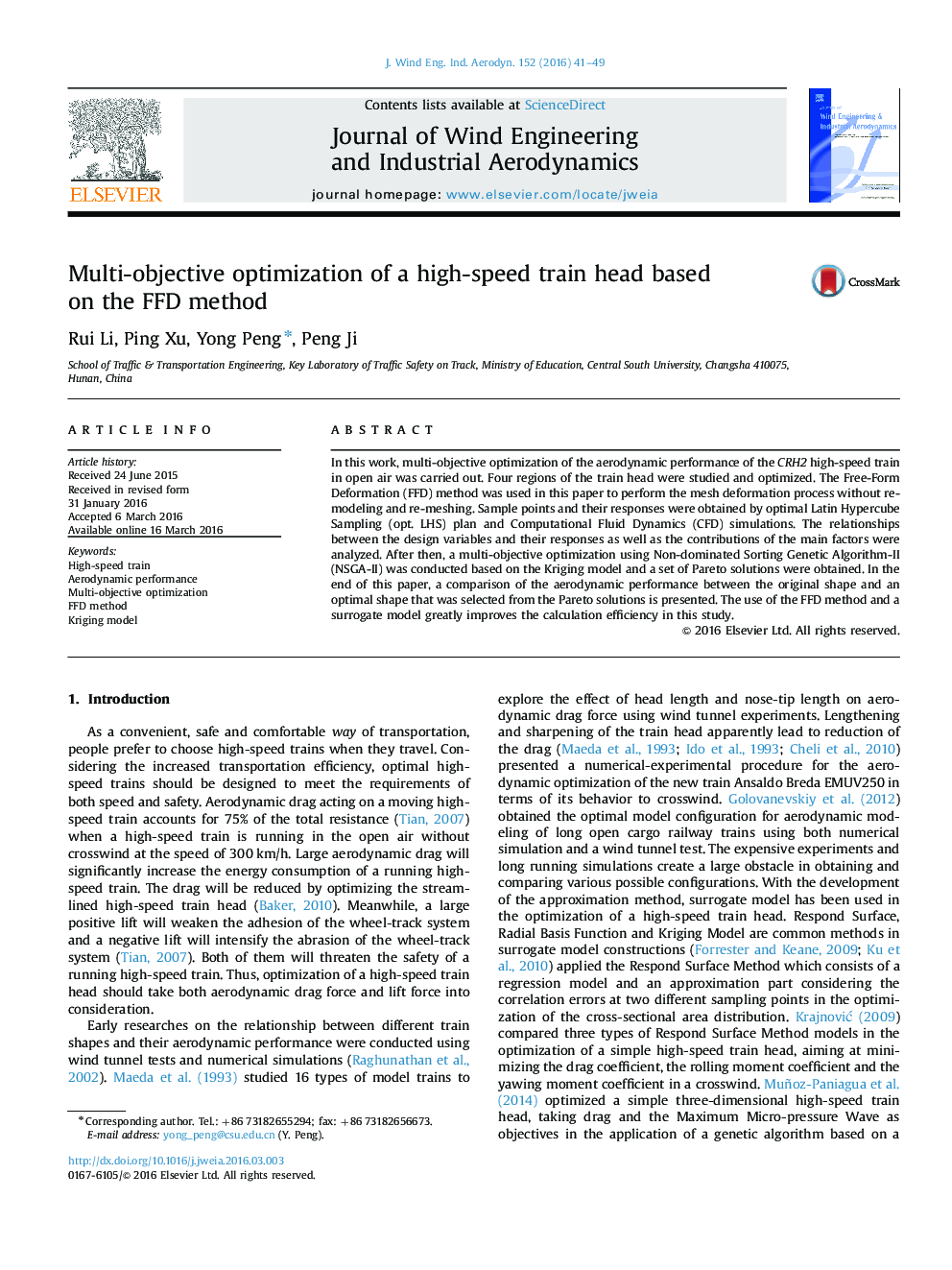| Article ID | Journal | Published Year | Pages | File Type |
|---|---|---|---|---|
| 292754 | Journal of Wind Engineering and Industrial Aerodynamics | 2016 | 9 Pages |
•The FFD method is used to leave out the remodeling and re-meshing process.•The Kriging surrogate models are constructed based on CFD results.•The multi-objective optimization is conducted to obtain Pareto solutions.
In this work, multi-objective optimization of the aerodynamic performance of the CRH2 high-speed train in open air was carried out. Four regions of the train head were studied and optimized. The Free-Form Deformation (FFD) method was used in this paper to perform the mesh deformation process without re-modeling and re-meshing. Sample points and their responses were obtained by optimal Latin Hypercube Sampling (opt. LHS) plan and Computational Fluid Dynamics (CFD) simulations. The relationships between the design variables and their responses as well as the contributions of the main factors were analyzed. After then, a multi-objective optimization using Non-dominated Sorting Genetic Algorithm-II (NSGA-II) was conducted based on the Kriging model and a set of Pareto solutions were obtained. In the end of this paper, a comparison of the aerodynamic performance between the original shape and an optimal shape that was selected from the Pareto solutions is presented. The use of the FFD method and a surrogate model greatly improves the calculation efficiency in this study.
